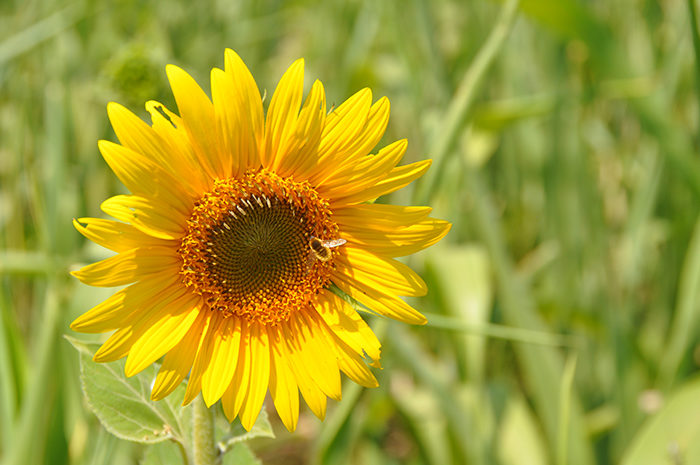Pollinators can be some of the first spring insects we notice in the landscape. Honey bees and native bees may begin to forage on grape hyacinth or snowdrops. You may even notice butterflies like, my favorite, the mourning cloak, as they emerge from their overwintering sites. This makes spring a great time to brush up on tips for pollinator protection.
Choosing a pesticide:
Choose a pesticide with lower bee toxicity. Some products, like neonicotinoid insecticides, are highly toxic to bees. While our target insects are killed by the application rates on the specific use section of the product label, some nontarget insects may be sensitive to smaller quantities of the material.
Products that are more problematic to bees will have a Bee Advisory Box on the label. The Bee Advisory Box will give additional information about the use of the product regarding pollinator safety. For example, it may say the product cannot be applied when bees are present, can only be used after petal fall or it may give additional information about avoiding particle drift.
To view a list of pesticides that are highly toxic, moderately toxic and relatively nontoxic to honey bees, visit Purdue University’s publication, Protecting Honey Bees From Pesticides.
Avoid microencapsulated formulations. Microencapsulated pesticides are droplets of pesticide surrounded by plastic or starchy materials. This coating allows the pesticide to be applied safely and breakdown to release the pesticide after application. Unfortunately, the particles are similar in size to pollen grains, so bees may collect them and carry them back to the hive where they breakdown and harm the bees.
Conditions for application:
Apply when temperatures are below 55°F, when bees are not active. Honey bees begin to forage when the temperature is 55°F or greater. The minimum temperature honey bees require for flight is 54°F, if bees’ flight muscles are cooler than that, they are unable to fly and forage.
Timing the application:
Apply treatments before dawn or after dusk, when bees are not active. Honey bees forage during the day after temperatures reach 55°F and return to their hives as the sun sets. Applying treatments when bees are not active is a good way to avoid honey bee exposure.
Avoid applying systemic treatments to plants prior to or during bloom. Systemic pesticides are taken up and transported throughout the plant and persist for longer periods of time. If a systemic treatment is applied on or near a flowering plant, that treatment may later become present in the pollen. If a flowering plant must be treated with a systemic insecticide, it is best to do so after the plant is done flowering to avoid pollinator exposure.
Location of the application:
Try not to make spray applications close to blooming flowers. This can help prevent particle drift onto the flowers and prevent pollinator exposure when they visit the flowers. Alternatively, granular pesticides can be applied to prevent particle drift onto flowers.
Keep in mind that clover and weeds in turfgrass are also visited by pollinators. Often flowering weeds are used as early season food sources for pollinators coming out of dormancy. If an early season treatment with a contact insecticide is necessary, mowing the flowers off of clover or weeds prior to the application is an option to avoid pollinator contact with an insecticide.
Determine whether there are sensitive areas near your application site. Check the IDNR Awareness Tool for Applicators, an interactive map that allows applicators to determine if there are sensitive areas near their application site. Sensitive areas may include preserves or areas that are habitat to threatened or endangered species, like the rusty patched bumble bee. Certain pesticides may be prohibited in those areas.
Notify beekeepers:
Notify beekeepers within 3 miles of the applications site 48 hours prior to applying a product toxic to bees. Visit Illinois DriftWatch or FieldWatch to identify beekeepers near your application site and notify them that you plan to apply pesticides. This gives beekeepers the chance to cover hives, move hives or otherwise accommodate the bees so they can avoid bee exposure by preventing the bees from foraging during the application.
While 3 miles may seem like a large distance, research has shown that the foraging range around beehives is about 2 miles and some individuals may travel up to 5 or 6 miles to find pollen and nectar.







Post a comment
Report Abusive Comment